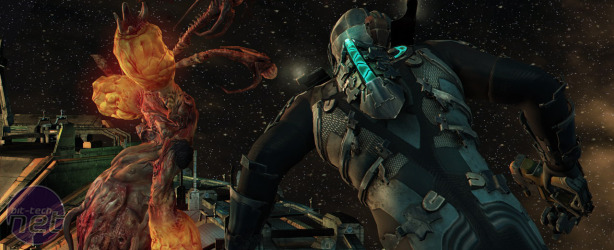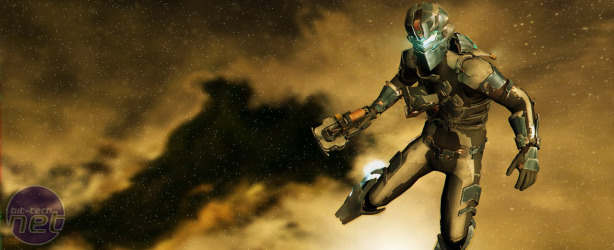
Dead Space 2
A big part of what makes Dead Space 2 such an enjoyable game, despite shedding its scary skin, is that it’s so incredibly well paced. After the explosive and genuinely tense opening, which sees a straitjacketed Isaac running defencelessly through an overrun section of The Sprawl space station where he is being held, the game slows down to a steadier pace, but remains gripping.Dead Space 2 doesn’t achieve this through a singular feature, but rather through the way that new features and items are rolled out steadily, from weapons to puzzles and enemies. There’s always a new item to save up for in the Sprawl’s stores, or a gimmick to get your head around, such as the returning zero gravity and outer-space sections.
Dead Space 2 makes regular use of big set pieces too, from collapsing tram systems to accidental flights through outer space. Expertly put together and often out-of-the-blue, these work brilliantly to get hearts racing, but still have more involvement from the player than just a simple cutscene. The tram sequence, for example, has Isaac suspended from the wreck by his feet, trying to hold off an advancing swarm before he frees himself.
Again, this points to Dead Space 2’s more action-orientated feel – there’s more time spent dodging bosses and facing down QTEs than being haunted or stalked.
The level design helps to make Dead Space 2 engaging and moreish as well. Set on a giant space station called The Sprawl, Isaac’s second adventure involves locations that are more visually distinct than the Ishimura’s science labs. There are places where the tone of the game shifts abruptly from the lasers and flickering strip lights of sci-fi to the dull candlelight and crimson gargoyles of a gothic nightmare. Sometimes it all feels terribly out of place and over done, though, like when you have to find medallion keys in Raccoon City’s central police station.
As with Resident Evil 2, however, it’s often worth forgiving these tiny excesses in order to appreciate the grander picture. Just as the medallions and hidden staircases in Resident Evil 2’s police station don’t grate, because that’s what everyone expects from that series, Dead Space 2’s inconsistencies do work on a whole-game scale. It seems out of place to have a gothic church on a space station, but it also establishes the character of Unitology and breaks up otherwise-monotonous tunnels of chrome and steel.
Dead Space 2’s new multiplayer component is the single largest addition over the original version, although there are plenty of smaller features, such as the ability to clear corridors by blasting suspiciously fragile windows. Sadly, the multiplayer component is also the weakest part of the entire game, but this is mainly because it compares unfavourably to other shooters, rather than because of any serious faults.
The idea of a human team trying to overcome a Necromorph team and complete an objective as quickly as possible is technically sound, if a little uninspired. We would have preferred a co-op campaign or swarm mode, although Dead Space 2’s multiplayer mode is still likely to attract a hardcore following in time.
There’s no denying, however, that Dead Space 2 as a whole is a hugely enjoyable game. It faces a problem in that it’s being billed primarily as a psychological horror when it’s actually much closer to an action-thriller, but it’s such a well-made one (barring a few minor niggles and camera issues) that this isn’t really a problem for very long.

MSI MPG Velox 100R Chassis Review
October 14 2021 | 15:04












Want to comment? Please log in.